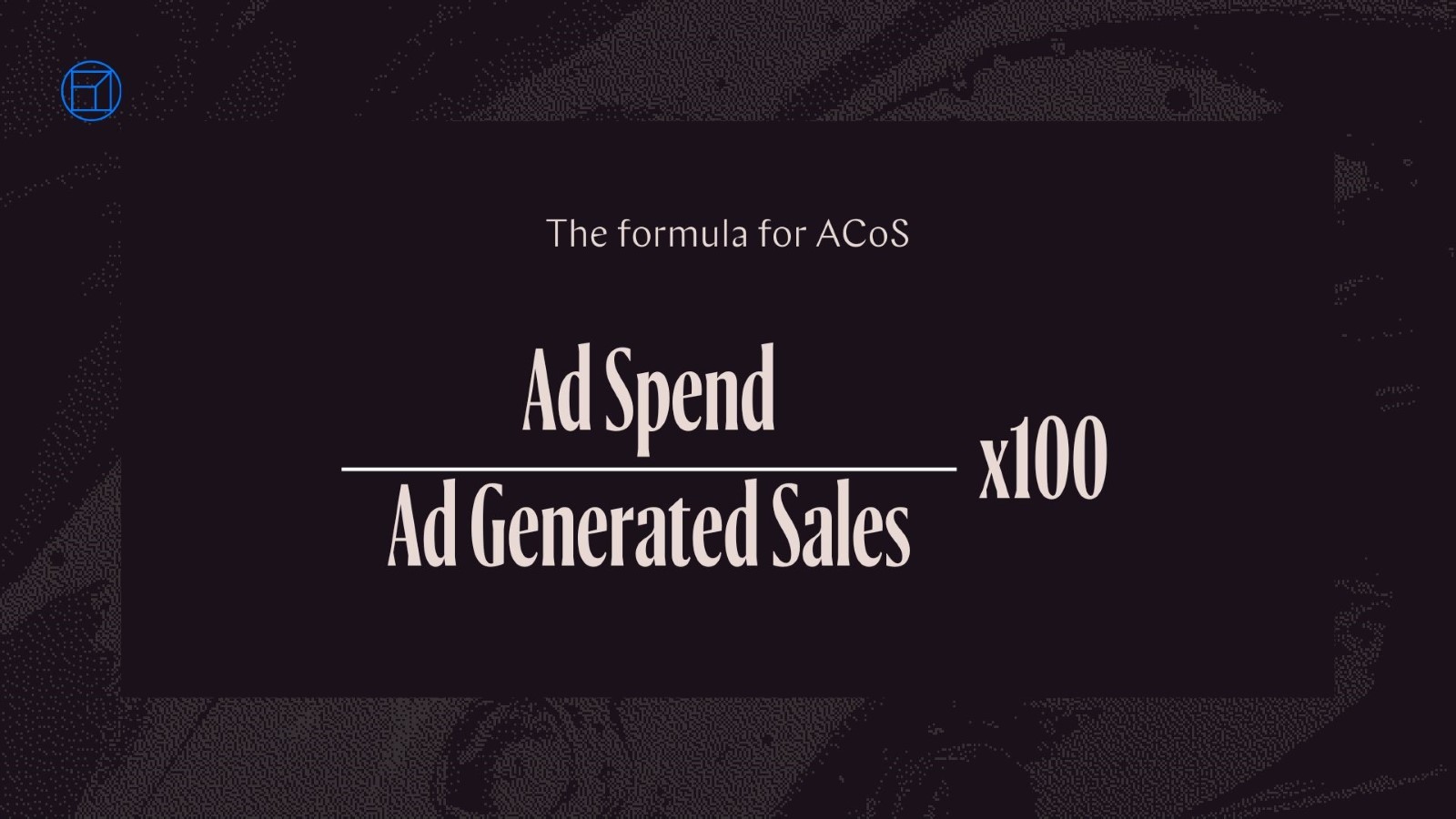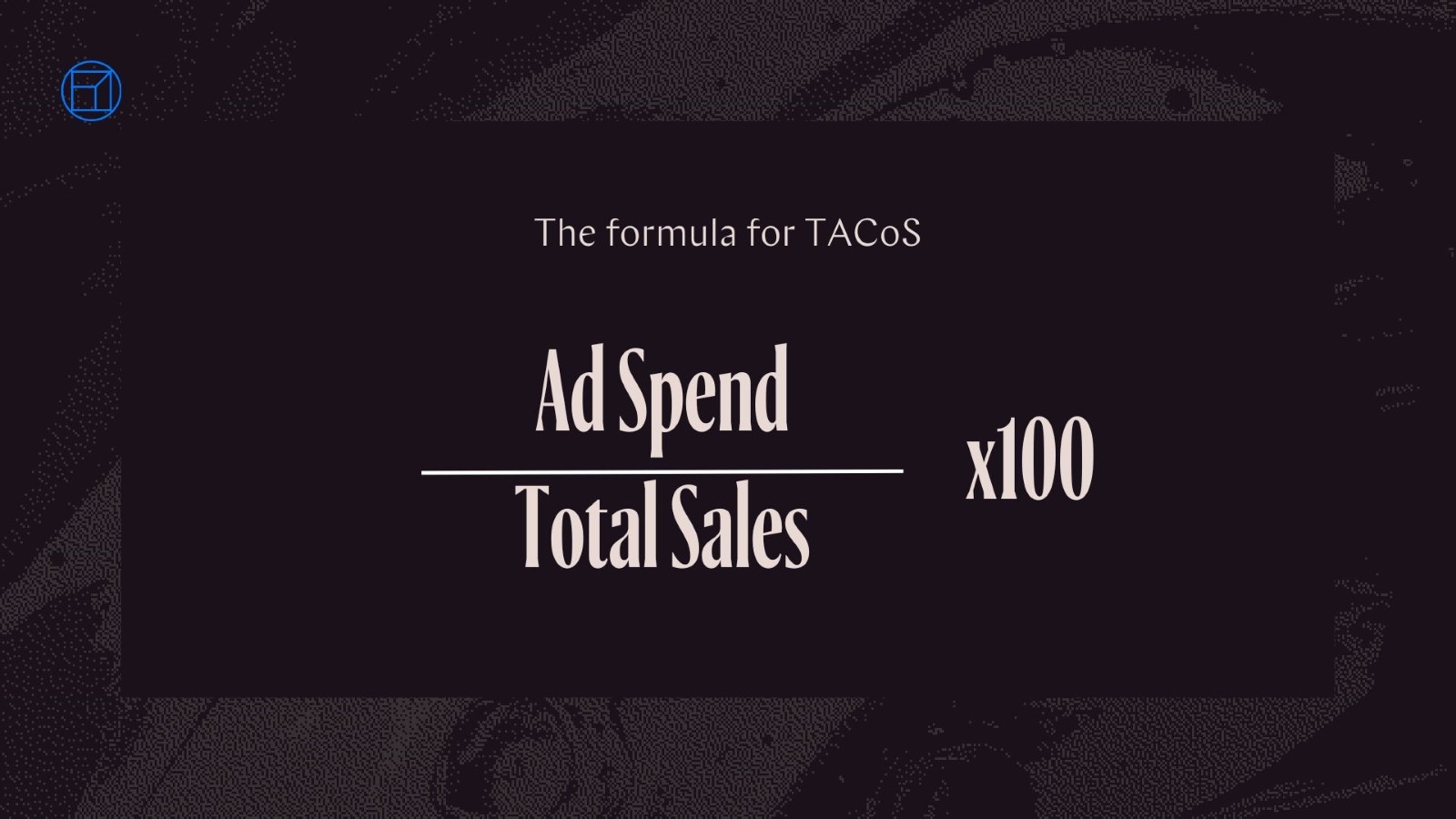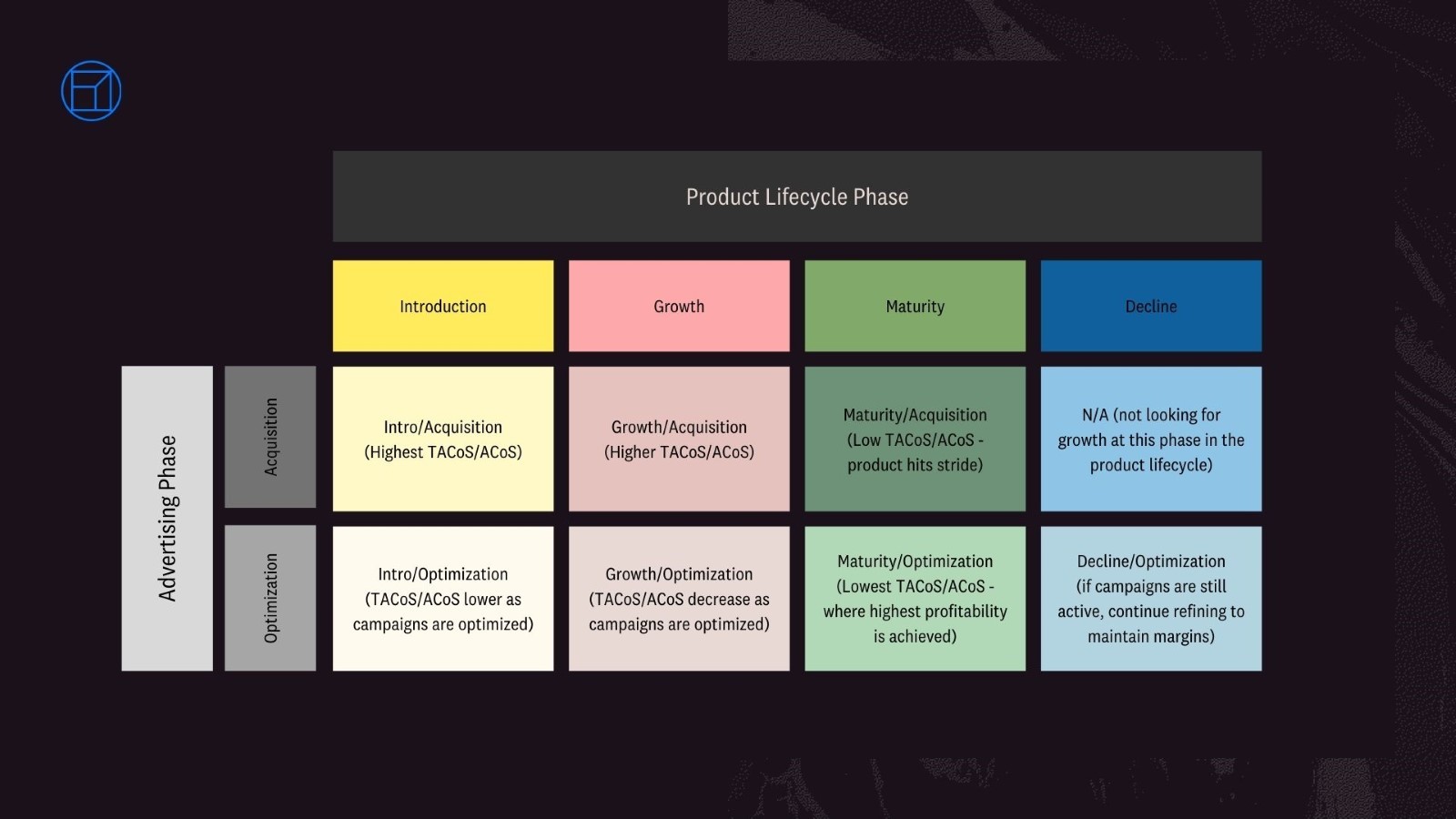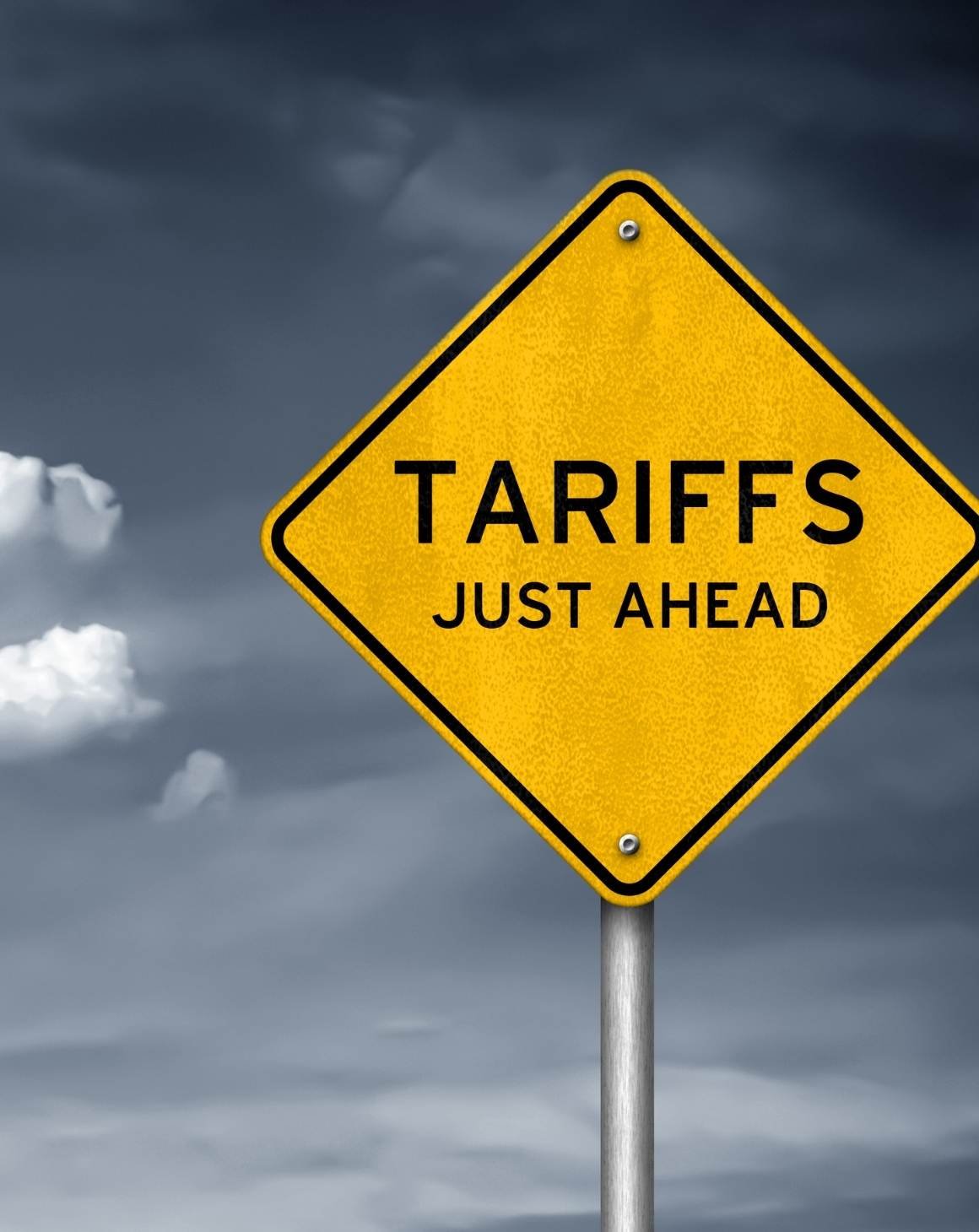There is no shortage of metrics to monitor when advertising products on Amazon, including CPC, CTR, ACoS, and TACoS. However, determining the most important metric and setting effective targets can be challenging.
Our Favorite Advertising KPI: Amazon TACoS!
Amazon TACoS, or Total Advertising Cost Of Sales, is our preferred Key Performance Indicator (KPI) when it comes to Amazon advertising. But first, let's start with Amazon ACoS (Advertising Cost Of Sales), as it is the most commonly used metric found in the Amazon Advertising user interface (UI).
Amazon ACoS Formula and Explanation
Amazon ACoS (Advertising Cost of Sales) is a metric that measures the effectiveness of your advertising campaigns on Amazon. It represents the ratio of the total advertising spend to the revenue generated from that advertising spend, expressed as a percentage. ACoS helps you understand how efficiently your advertising dollars are being utilized and whether your campaigns are profitable.
How to calculate ACoS on Amazon?
To calculate ACoS on Amazon, you need to divide your total advertising spend by the attributed sales generated from that advertising spend, and then multiply by 100 to express it as a percentage. The formula is as follows:
ACoS = (Total Advertising Spend / Attributed Sales) * 100

For example, if you spent $100 on advertising and it resulted in $1000 in attributed sales, the ACoS would be 10%:
ACoS = (100 / 1000) * 100 = 10%
What is considered a good ACoS?
The definition of a good ACoS can vary depending on factors such as product margins, business objectives, and industry norms. Generally, a lower ACoS indicates higher profitability, but it is essential to find a balance between ACoS and revenue growth. ACoS that is too low may indicate underinvestment in advertising, while ACoS that is too high may indicate inefficiency in campaign management.
To determine a good ACoS for your business, consider factors like product margins, customer lifetime value, and your specific advertising goals. It is also helpful to benchmark your ACoS against competitors in your industry to gain insights.
How to lower ACoS?
Lowering ACoS requires a strategic approach. Here are some tips to help reduce ACoS:
- Keyword Optimization: Identify and target relevant keywords with high conversion potential. Focus on long-tail keywords, negative keywords to exclude irrelevant searches, and adjust keyword bids based on performance.
- Ad Copy and Creatives: Improve your ad copy, product images, and other creative elements to make them more appealing and relevant to your target audience. A compelling ad can increase click-through rates and conversion rates, thereby reducing ACoS.
- Campaign Structure and Targeting: Optimize your campaign structure by organizing ad groups and campaigns based on product categories or performance. Refine your targeting options, such as demographics, interests, and placements, to reach your ideal audience effectively.
- Bid Management: Continuously monitor and adjust your bidding strategy. Test different bid amounts, including manual bidding and automated bidding options like Amazon's Sponsored Products automated targeting, to find the optimal bid that balances visibility and cost.
- Product Listing Optimization: Optimize your product listings by improving product titles, descriptions, bullet points, and backend keywords. This helps improve organic rankings, which can lead to increased sales and reduced reliance on paid advertising.
- Landing Page Optimization: Ensure your landing pages provide a seamless user experience and are optimized for conversions. Make them informative, user-friendly, and aligned with your ad messaging to maximize the likelihood of sales.
Understanding TACoS: TACoS Formula and Importance
What does Amazon TACoS mean?
Amazon TACoS (Total Advertising Cost of Sales) is a metric that measures the total advertising cost relative to the total sales of a product on Amazon. It provides insights into the impact of advertising on overall sales performance, considering both the sales generated directly from advertising and the organic sales influenced by advertising efforts.
How to calculate TACoS?
To calculate TACoS, you need to divide the total advertising cost by the total sales of a product and multiply the result by 100 to get the percentage. The formula for calculating TACoS is as follows:
TACoS = (Total Advertising Cost / Total Sales) x 100

The total advertising cost includes the expenses incurred from running advertising campaigns, such as sponsored product ads or sponsored brand ads. The total sales include both the sales directly attributed to advertising and the organic sales influenced by advertising efforts.
What is a Good TACoS?
The definition of a good TACoS can vary depending on factors such as profit margins, business objectives, and industry benchmarks. In general, a lower TACoS percentage is desirable as it indicates better profitability and efficiency in advertising spend. However, the ideal TACoS target will depend on your specific business goals and cost structures. It is important to find a balance between advertising investment and profitability that aligns with your business objectives.
To determine a good TACoS for your business, you can consider factors such as your product margins, desired profit levels, and industry benchmarks. Analyze your historical TACoS data and compare it to your profitability goals to identify a target TACoS that allows you to achieve a satisfactory level of profitability while driving sales through advertising.
How to Use TACoS to Measure Your Profitability?
TACoS can be used as a key metric to measure the profitability of your advertising efforts on Amazon. Here's how you can use TACoS to evaluate and improve your profitability:
- Set a target TACoS: Determine a target TACoS percentage based on your desired profitability goals, cost structures, and industry benchmarks. This target will serve as a reference point to assess the efficiency of your advertising spend.
- Track TACoS regularly: Monitor your TACoS performance regularly to evaluate whether you are meeting your target. Track the changes in TACoS over time to identify trends and patterns.
- Optimize your advertising campaigns: Analyze the factors contributing to your TACoS and identify areas for improvement. Optimize your advertising campaigns by refining your targeting, adjusting bids, optimizing keywords, and improving ad creatives. Continuously test and iterate your strategies to achieve a more favorable TACoS.
- Assess profitability at the campaign level: Evaluate the profitability of individual advertising campaigns or product groups by comparing their TACoS with your product margins. Identify campaigns that are driving higher profitability and allocate resources accordingly.
- Monitor the impact of changes: When you make adjustments to your advertising strategies or introduce new campaigns, monitor the changes in TACoS to understand the impact on your profitability. This will help you make data-driven decisions and optimize your advertising efforts for better profitability.
This distinction is vital because a lower TACoS percentage indicates a higher profit margin for the overall sales of your product, incorporating revenue from both paid and organic traffic. Setting ACoS targets aggressively plays a significant role in achieving a low TACoS.
ACoS vs. TACoS
ACoS (Advertising Cost of Sales) and TACoS (Total Advertising Cost of Sales) are two related metrics used in Amazon advertising, but they focus on different aspects:
ACoS measures the advertising cost relative to the sales generated directly from advertising campaigns. It helps evaluate the efficiency of individual campaigns and keywords.
TACoS, on the other hand, considers the advertising cost relative to the total sales of a product, including both sales from advertising and organic sales influenced by advertising efforts. TACoS provides a more comprehensive view of the overall impact of advertising on sales performance.
While ACoS is valuable for evaluating the efficiency of individual campaigns, TACoS provides a broader perspective on the profitability of your advertising efforts, considering the overall sales performance of a product. Both metrics are useful in assessing and optimizing your advertising strategies on Amazon.
Setting Goals for ACoS and TACoS
Never Set a Single KPI Goal for Your Entire Catalog
KPI goals should be established at the product or product group level. If your catalog is small, set goals at a product level. For larger catalogs with similar products, set goals at a product group level.
Considering Brand Appetite for Growth
Determining the brand's appetite for growth is crucial in setting ACoS and TACoS targets. It involves understanding how much the brand is willing to invest in driving long-term sustainable growth. The level of aggressiveness in spending should align with the brand's growth strategy.
Considering Profitability
Profitability should never be overlooked when setting KPIs. Understanding the gross margin of the product or product group is essential. Consider factors such as base product cost, shipping fees, return rate, and Amazon's referral fees. Knowing the true gross margin helps determine the percentage of top line sales available for advertising.
Setting Goals Based on Product Lifecycle Phase
Introduction / Launch Phase
During the introduction or launch phase, a higher TACoS percentage is expected. Investing heavily in marketing and advertising is crucial to establish the product in the digital space and overcome rising customer acquisition costs.
Growth Phase
As the product enters the growth stage, expect TACoS to decline. However, maintain a relatively aggressive ACoS target to drive peak volume and improve organic ranking.
Maturity Phase
Congratulations on reaching the maturity stage! Dial back ACoS to a permanently sustainable level that ensures long-term profitability. This is when you will experience the lowest possible TACoS and enjoy the rewards of your success.
Decline Phase
In the decline phase, carefully manage ACoS and TACoS targets as the product faces challenges or decreased consumer interest. Consider discontinuing advertising or running promotions to clear inventory.
Understanding Product Advertising Cycles
Acquisition Phase
In the Acquisition phase, be more aggressive in your advertising approach. Cast a wide net, add keywords, and gather data on which search terms drive sales. Expect a higher ACoS and TACoS during this phase as you acquire the necessary intelligence to move to the next stage.
Optimization Phase
During the Optimization phase, leverage the insights gained from the Acquisition phase to refine and optimize your campaigns. Introduce new keywords, optimize match types, and eliminate underperforming search terms through negative keywords. Continuously optimize budgets to achieve your ideal ACoS and, more importantly, TACoS goals, maximizing the product's contribution margin.
How to Set KPIs
Considering Multiple Factors
When setting KPIs, take into account factors such as gross margin, appetite for growth, aggressiveness, product lifecycle phase, and advertising cycle. Every client, brand, product, product group, and category competitiveness will have varying KPI targets. Use the provided graphic to visualize how ACoS and TACoS goals change over time and set your targets accordingly.

Conclusion
Understanding and effectively utilizing Amazon advertising metrics is crucial for maximizing your advertising ROI. While metrics like ACoS and TACoS play vital roles, it's important to align them with your specific goals, product lifecycle phases, and advertising cycles. Regularly monitor and adjust your targets to optimize your advertising campaigns and achieve long-term success on the Amazon platform.
Need Help Understanding Metrics? We're Here for You!
Navigating Amazon advertising metrics like ACoS and TACoS can be complex, but you don’t have to do it alone. As a trusted Amazon advertising agency, we specialize in marketplace and eCommerce strategies that deliver results. Schedule a consultation with us today, and let’s work together to optimize your advertising efforts and grow your brand on Amazon!








.png)
.png)
